There is a season for almost everything food related in France. Well, okay, not for bread, which French people will happily eat every day all year round. But fruits, vegetables, nuts, some cheese, and even some meat products have seasons when they are typically eaten.
January in France is the season for la galette. Galette is a somewhat generic term meaning a round, flat, carbohydrate based thing that is not bread – a galette doesn’t have yeast or levain. Buckwheat crepes (which are the savory crepes in France, filled with things like ham, cheese, eggs, spinach, and so on) are called galettes. Potato pancakes (like latkes) are galettes, and so are round shortbread cookies.
But when the French talk about “la galette” in January, they mean la galette des rois, the cake of kings. The kings in this case are the biblical Three Kings, the ones who brought gold, frankincense and myrrh to the infant Jesus, and the point of the galette des rois is to celebrate the Epiphany, twelve days after Christmas on January 6th.
The cake itself is round, made with two layers of puff pastry stuffed in the middle with frangipane – a mixture of finely ground almonds, butter, sugar and eggs.
Every bakery in France has them on prominent display.
We also saw them for sale at this famous chocolate shop (Sève) and at the local Carrefour, a grocery chain like Safeway.
Because the cake is delicious, the French don’t confine themselves to eating it only on the day of the Epiphany. I was surprised when Christian had la galette at work on January 2nd, the day of the reprise (restart) for 2025. Then he had it again at work a week later, again with friends while I was away visiting my daughter, and two more times at work in mid to late January. I learned that officially the season for la galette is from the first Sunday in January until Mardi Gras, though Christian was adamant that you can’t eat it after the end of January. I found another site claiming that the end of the season is the 2nd of February which is la Chandeleur (Candelmas), yet another religious holiday: this one is 40 days after Christmas and marks the presentation of baby Jesus at the temple. Like so many Christian holidays, it replaced an older pagan tradition - in this instance of welcoming the sun back after the long winter. And since it’s a French holiday, there is also a traditional food associated with it, in this case crepes.
I pointed out in mid-January that I had not yet had la galette a single time, much less five times, and Christian obligingly picked one up for us at the Kayser bakery and brought it home after work.
Each galette comes with a hidden fève and a paper crown. Fève literally means fava bean, but these days the fève is usually a porcelain figurine. Some people even collect them: https://www.atlasobscura.com/articles/rare-feve-collections.
When you have la galette at home, you cut it into pieces. Then the youngest person has to sit underneath the table while the person serving slides the spatula under a piece and asks “This one is for whom?” The response comes from the person under the table. This way, the thinking goes, the piece with the fève in it will be distributed at random. The youngest person stays under the table until all of the slices are distributed. When we did this last week, the youngest was my stepson who plays American football and is by far the tallest and most muscular person in the family. But under the table he went.
Whoever has the fève in their piece of the galette is the king or queen and gets to wear the crown. This time I was the lucky winner.
The first time I ever heard of this tradition (a three kings cake with a hidden object inside) was not in France but in Mexico. I did a two-week intensive Spanish immersion school in Ensenada in January of 2017, and on January 6th we had a rosca de reyes during the mid-morning coffee break. I was the lucky student who found the fève, which in Mexico is a tiny plastic Jesus.
The Mexican version traces its origins to Spain, and the Spanish are almost certainly also responsible for bringing it in this form to New Orleans where it is known as King Cake. It seems to have become slightly unmoored from the traditional Epiphany celebration and is instead consumed most often during Mardi Gras. As in Mexico, it is wreath shaped with a porcelain infant Jesus figurine as the fève. The traditional colors for decoration are purple, green and yellow.
The Spanish in turn got the cake from Provence, in the south of France. The Provencal version of la galette (in the south also called the gateau des rois or the brioche des rois) is a ring in the shape of a crown with candied fruits representing jewels. As explained on this website https://www.bormeslesmimosas.com/le-gateau-des-rois-en-provence/, where I found the photo below, the Provencal version includes two fèves - one an actual fava bean, and the other a porcelain figurine. The person who gets the fava bean is the king, while the person with the figurine is the queen.
Some bakeries in Lyon also offer Provencal style king cakes.
Whether they are “regular” or Provencal style, galettes from a bakery are quite expensive. The one Christian got for us at Kayser was 28 euros. The ones from Carrefour, the supermarket, were only 9 euros and are still made fresh with natural ingredients (meaning nothing ultraprocessed), but the quality isn’t the same.
Since excellent, pre-made puff pastry made without preservatives is available fresh in every grocery store in France, it is surprisingly easy to make your own galette des rois. Doing research on ingredients, I learned that in blind taste tests the frozen puff pastry from Picard (ingredients flour, butter (33%), water, salt) was the most highly rated. That version has to be thawed and rolled out though, so usually if we’re going to make one at home we buy a pre-rolled round like this one:
You buy them rolled up in a piece of parchment paper with a cardboard triangle protecting it from being crushed:
Once you have the puff pastry, it takes just a few minutes to mix the frangipane filling, then maybe 15 minutes more to seal it and decorate it. Here is a galette that my stepdaughter made a few years ago:
I’ll leave you with a recipe from David Lebovitz, the well-known American pastry chef who moved to Paris twenty years ago. This post from his website has precise measurements and very helpful photos illustrating the process: https://www.davidlebovitz.com/galette-des-rois-kings-cake-recipe/
You can leave out the orange zest, rum, and almond extract if you don’t have or don’t like any of those. (I personally can’t stand the taste of almond extract, so I would replace it with a teaspoon of vanilla extract.)



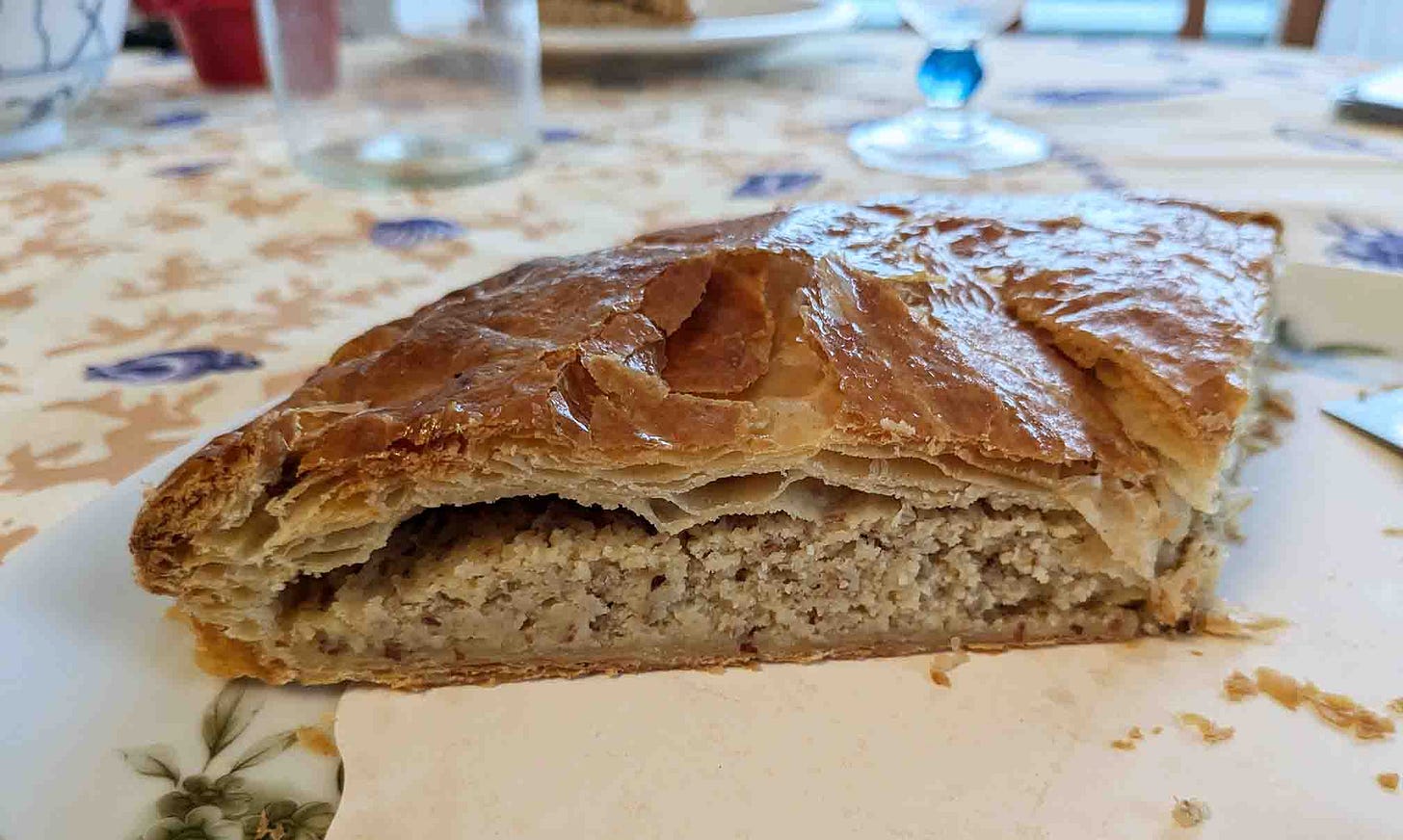

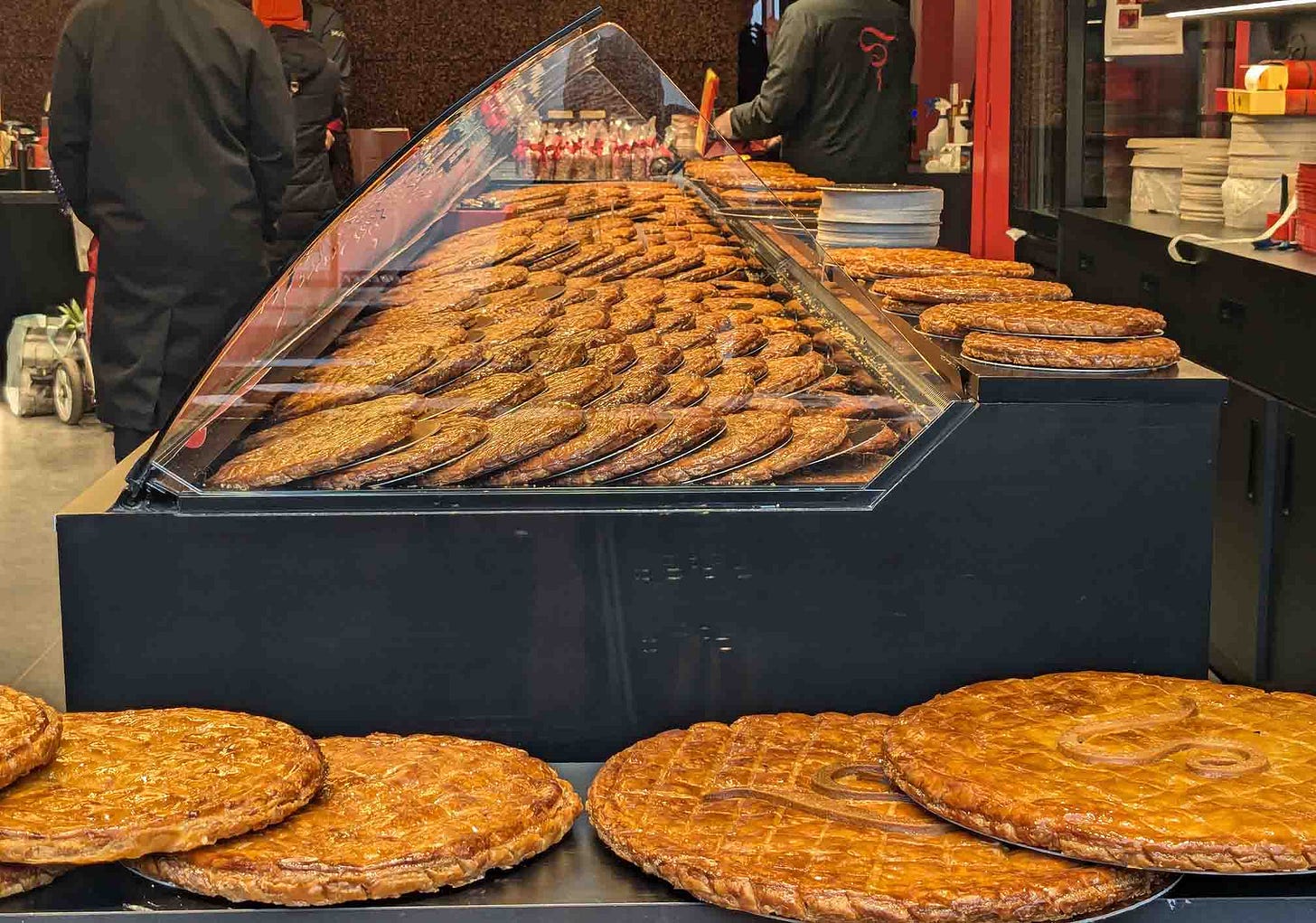
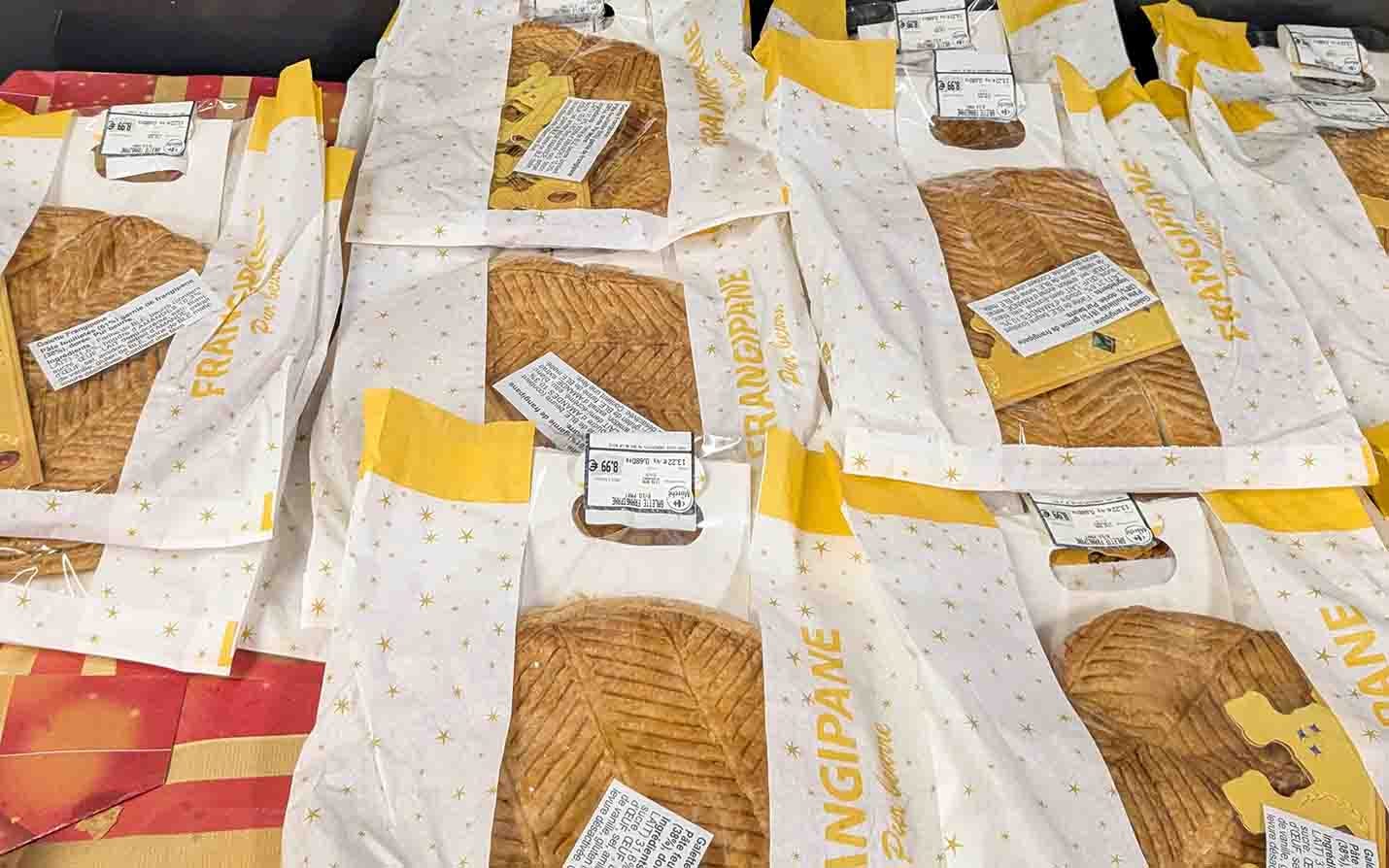
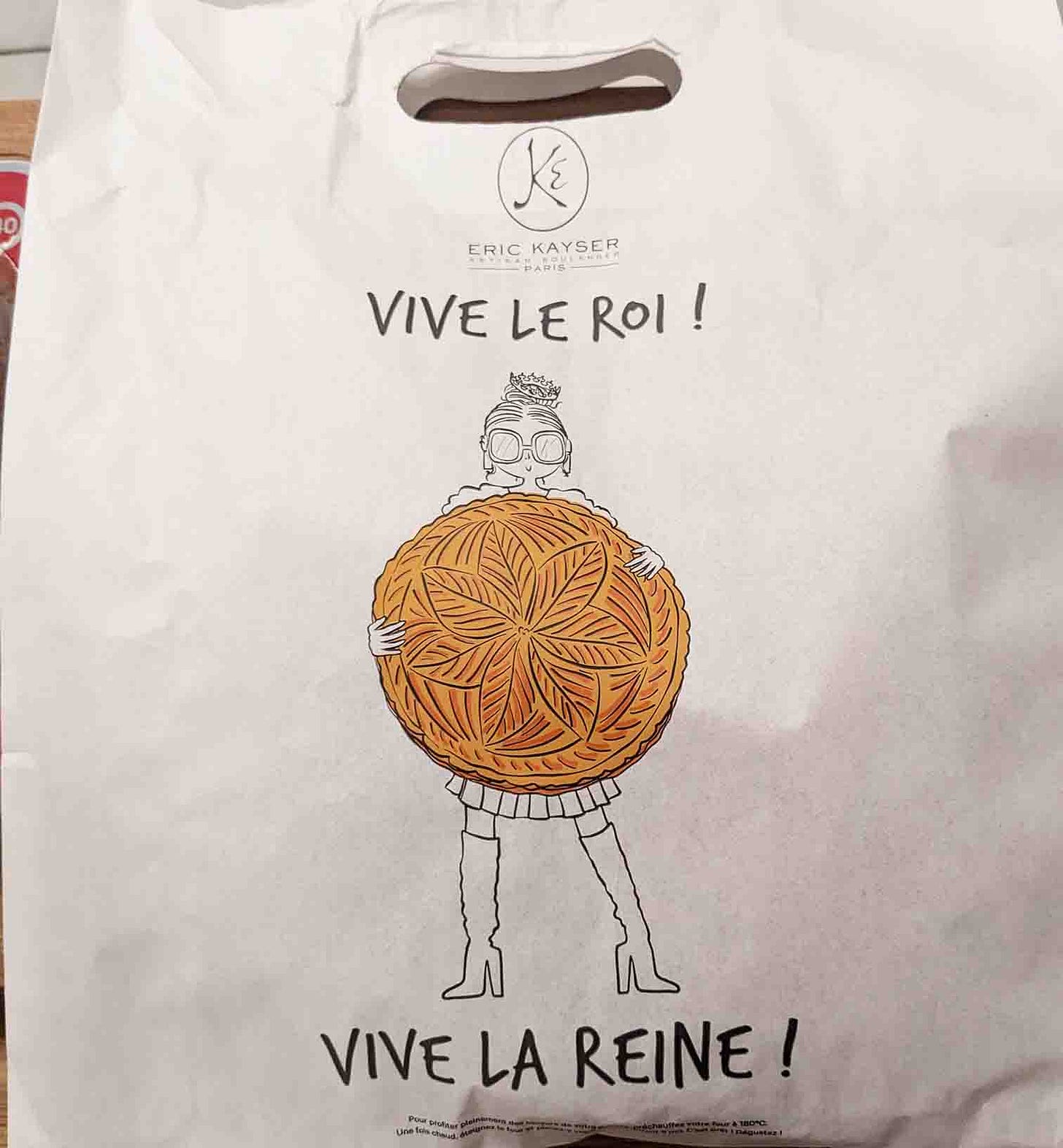

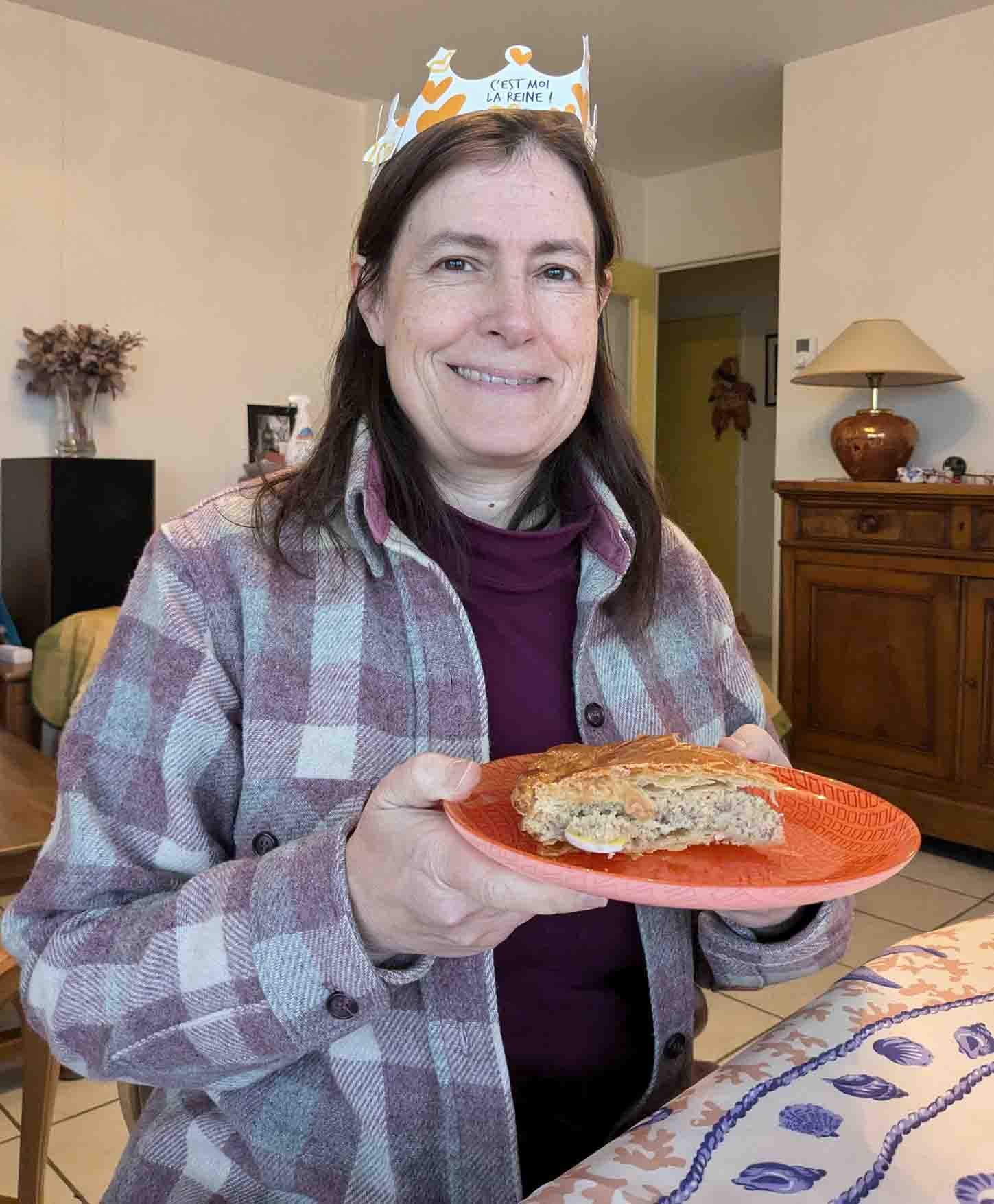



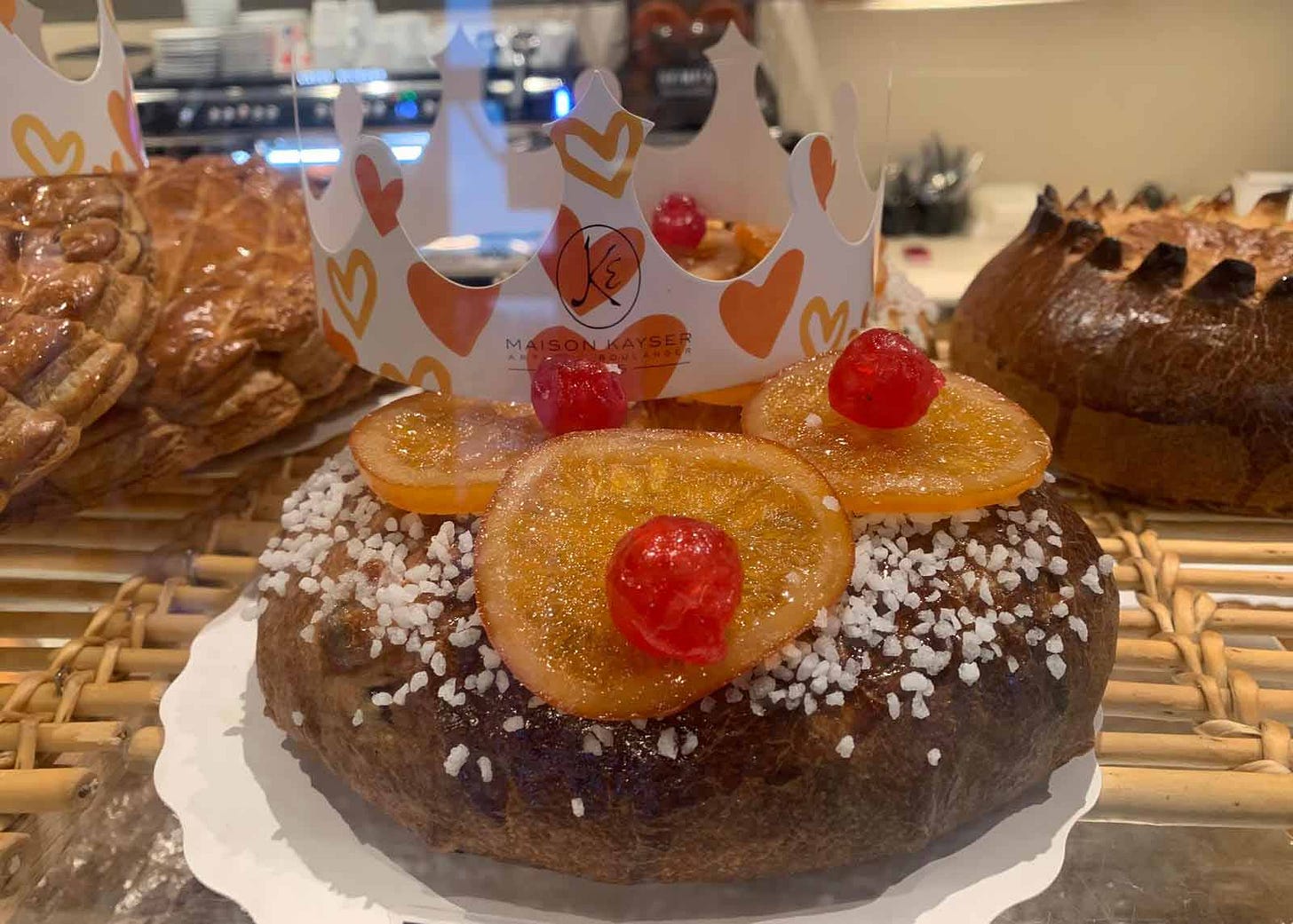

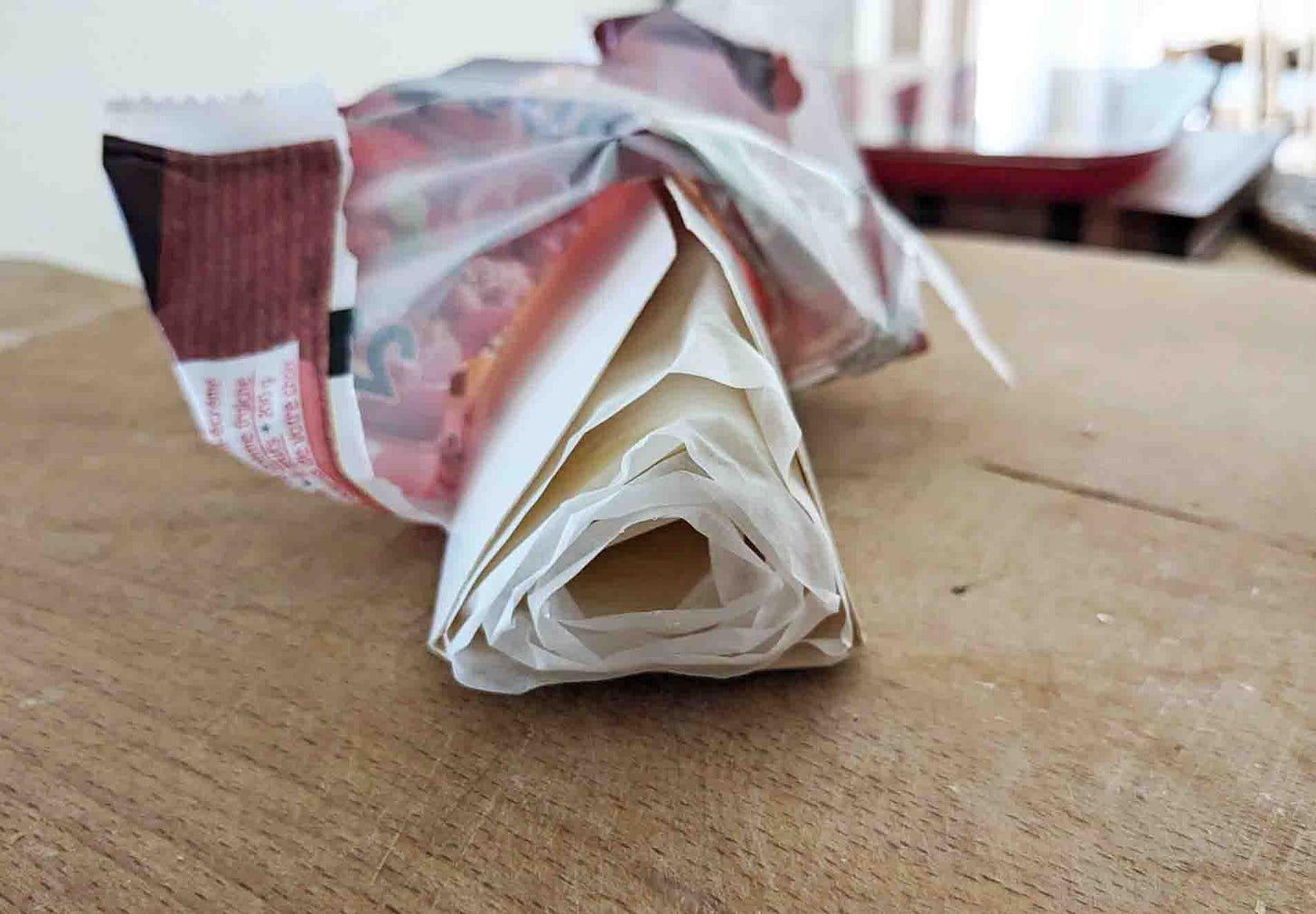
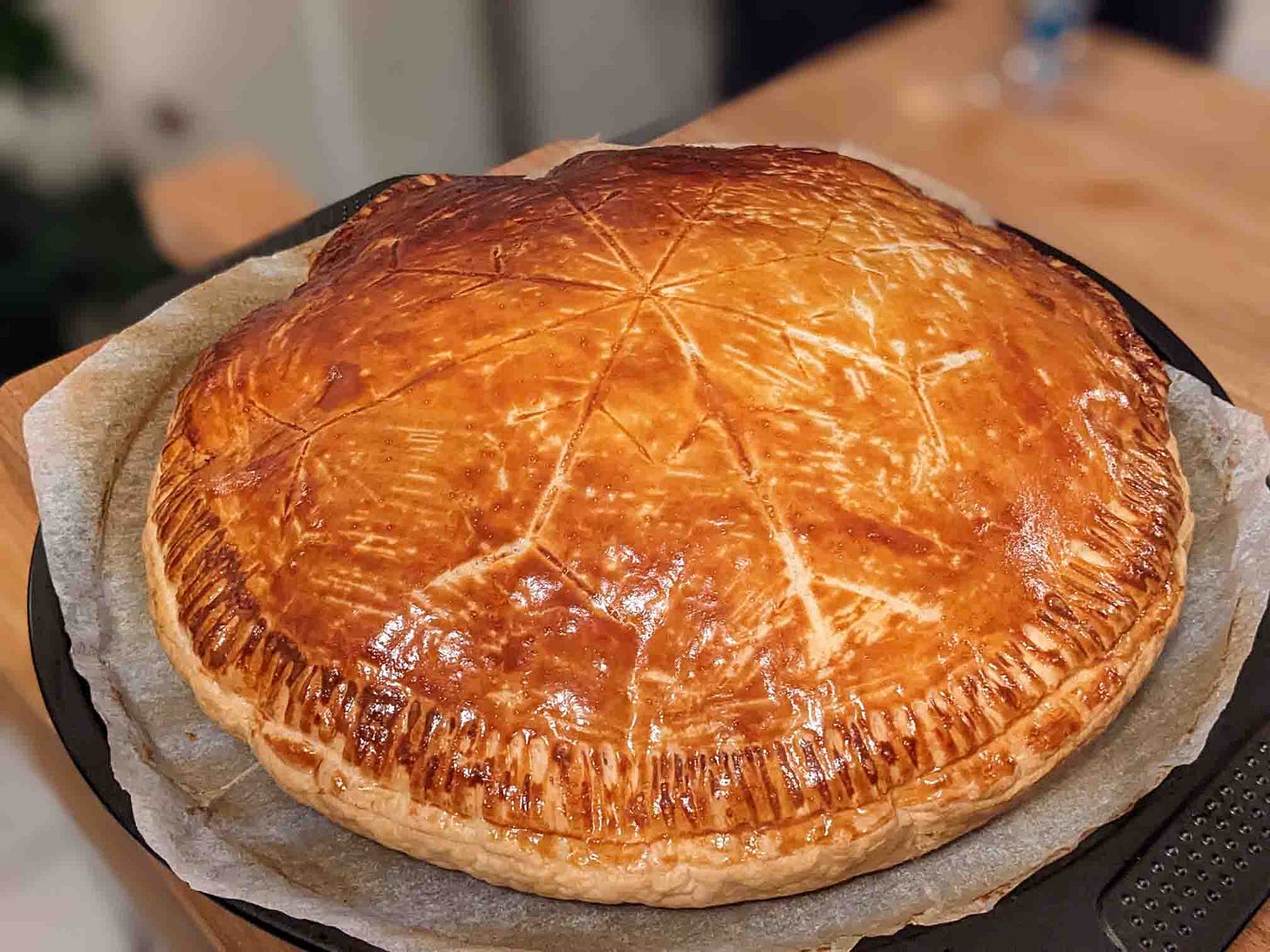
I completely understand what you were trying to say, but the Carrefour is not anything like a Safeway, at least not any I know! ;-)